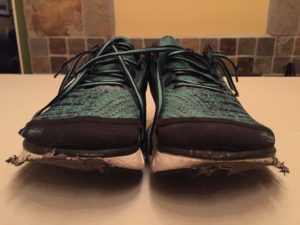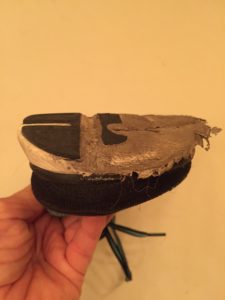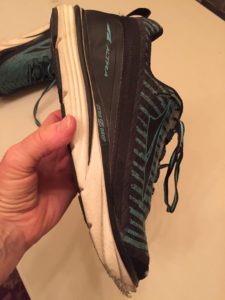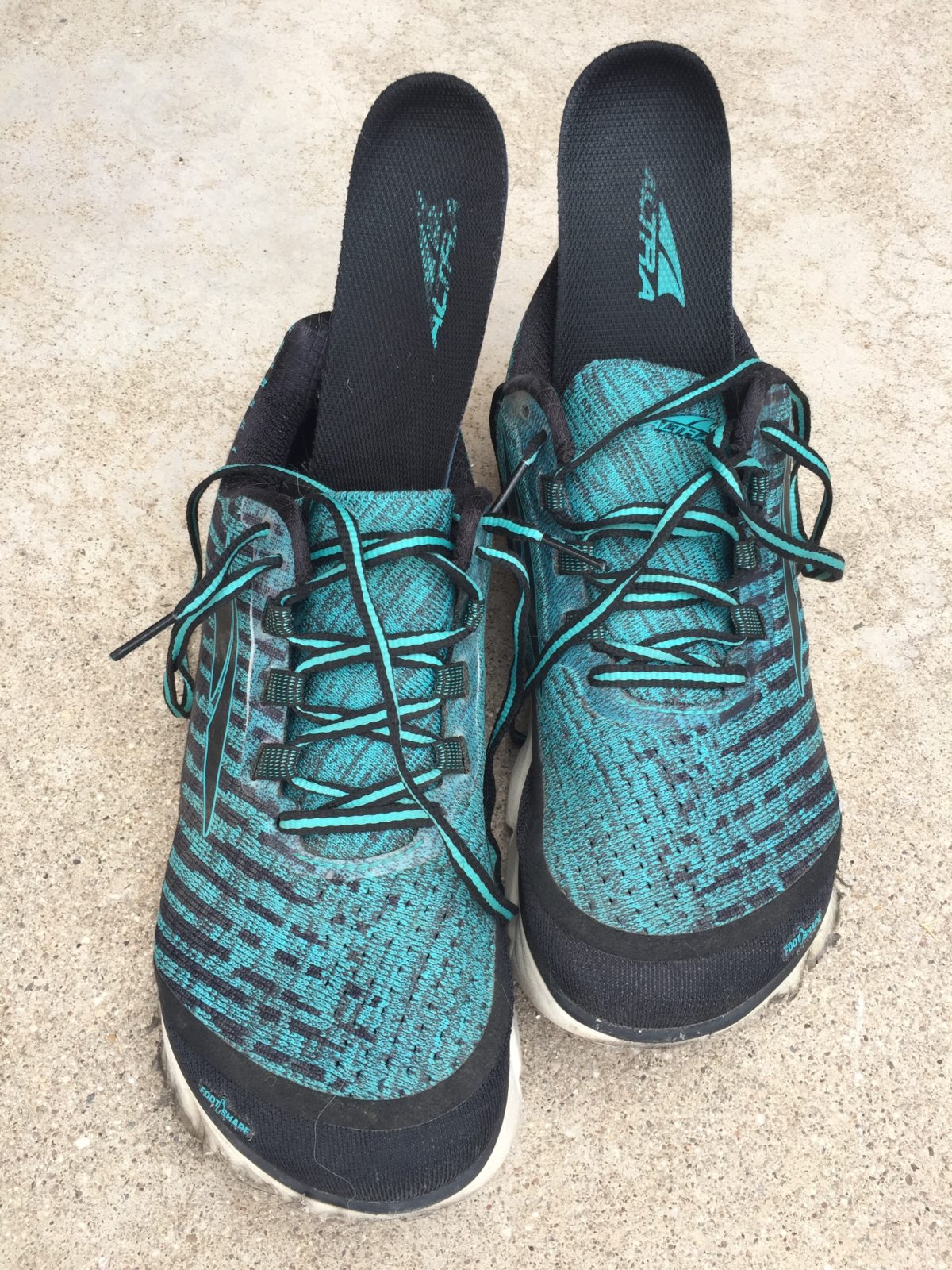When you begin a walking, hiking or running program, what’s the first thing you need to take into consideration, after making sure you’re ready, willing and able to partake in one of those activities?
If you’ve been reading Workout Wednesdays for a while, you’ll probably hit on the right answer.
Your feet.
And if your feet are so important, it’s critical that you know them well, so you’ll be able to take better care of them and reduce your your chance of suffering injuries from the toes all the way up to the ankle, legs, knees, hips and back!
What do I mean by knowing them well?
Give them a close examination—
Sit down with your favorite pair of walking or exercise shoes and really take a good look at the shoes and your feet.
- Examine how narrow or wide your foot is.
- Do you have a high arch when your foot is relaxed? Or is it flat? There are lots of technical names for the kind of arch you might have, like a functional flat foot, a rigid, pes equinus (where the arch doesn’t flatten out when you stand on your feet, so all of the pressure is on your heel and ball of your foot; and you have limited ankle range of motion).
- Where do you tend to get calluses on your feet and toes? On the side of your big toe? The heel, or ball of the foot?
- Do your calluses get really thick and then crack and bleed? Where does that happen most often on your feet?
- Is your second toe longer than your great toe? (Something that may indicate you are prone to having a balance problem.)
- Do you have bunions or corns, plantar warts, or any other issues you need to address?
- Are you prone to getting ingrown toenails? Blisters anywhere on the foot?
- Examine your toenails. Do they run into the toe of the shoe when you’re walking? Have they thickened?
- Is the structure (and size) of one foot drastically different from the other, requiring different treatments or support material for each foot?
- Stand on a piece of paper and trace outlines of both feet. Do they look identical? What’s the length and width difference?
*A good way to determine if you have a compensating arch that drops a little when your foot gets loaded with weight is to get a brown paper bag that’s bigger than your foot. Get the bottom of your foot wet and then rest your foot on the flattened bag for a second. Then stand on the paper bag for a couple of seconds. Look at the foot form left on the bag. Is it flat? Is there an arch? Did it change when you went from non-weight bearing to full weight bearing? Where does it look as though your foot is not making any contact with the ground?
Knowing these aspects of your feet will help you when you head to the store to purchase shoes and any supportive insoles you think you need or just want to add for some cushion to your feet.

Now for the shoes—
Take a really good look at your shoes—tops, bottoms, sides, toes and heels. And the insides.
- What kind of wear patterns do you see?
- When you hold your shoe up and look at it from the back, does the heel look worn down on either side? A wearing down of the inside ankle bone side indicates that your heels tend to pronate (roll in) when your foot strikes the ground? If they lean to the outside ankle bone, then you might have what’s called hind foot supination.
- What does the toe box area of the shoe look like on top and underneath the shoe? Does the toe box look as though it leans to the outside or inside, giving you an indication of the pressure your foot exerts on the material or sole when you’re walking? Is there a more pronounced wear pattern on the outside of the toe area, indicating your foot rolls to the outside and you tend to push off the fourth and fifth toes (supinate) during push off?
- Does the insole provide sufficient padding for your feet, or did it break down quickly and leave you with little or no arch support?
Case study—
In the pictures below, you can see the dramatic wear patterns of my Altra road shoes, with the distinct medial breakdown of the right shoe in the heel area and the outside (fourth and fifth toes) in the toe area.
I have significant rear or hind foot pronation and forefoot supination. For some reason, the right shoe has taken a particularly hard beating and already—after six weeks—needs to be replaced because it’s no longer giving me the support I need.
Two possibilities come to mind:
- I wore the shoes on both blacktop and trail, which may have stressed the shoe material too much; or
- The shoes simply don’t provide me with the arch support I need in my right foot, which is a problem for me. I suffered a severe fracture (segmental, displaced) of the outside leg bone (fibula), which caused my right leg to be slightly shortened and twisted. I already had foot problems. This may have worsened the condition.
Clearly I need some kind of posting, or support, on the right foot.
What’s frustrating is that when I walk, I can feel the broken down shoe actually shifting my foot more severely to the inside, which creates more problems and causes me to try to reposition my foot in the shoe while I’m walking! Not good or efficient.
My trail shoes have not shown such severe wear patterns, so I think the material and lighter support in these road shoes may be the culprit for me.





These are all critical questions to ask yourself when you’re going out to buy new athletic shoes. Take notes with you, or take the shoes with you to show the shoe salesperson. They can better recommend shoes and insoles for your particular needs.
And when you go, take the socks you are most likely to wear with you to try on the shoes. That will help you decide which shoes will fit and be most comfortable.
And speaking of socks! We’ll be discussing those next week. They’re a critical component of exercise and can make or break an otherwise enjoyable hike or walking outing. One experienced hiker said he’d lean toward buying a cheaper pair of boots and an expensive pair of socks for his trips.
Yes, they’re that important!
So until next week,
Keep those feet happy and moving!
Blessings,
Andrea
May you prosper in all things and be in health, just as your soul prospers (3 John 2).
